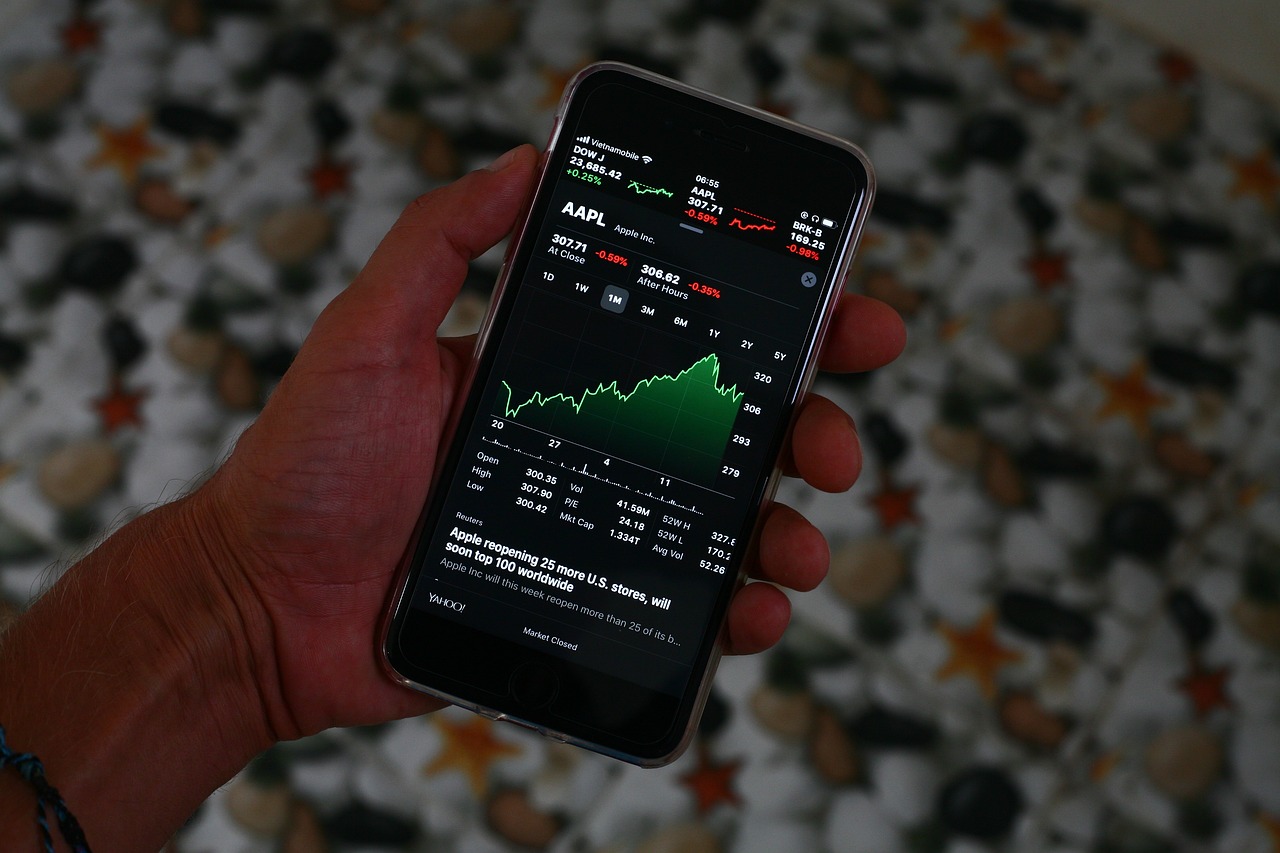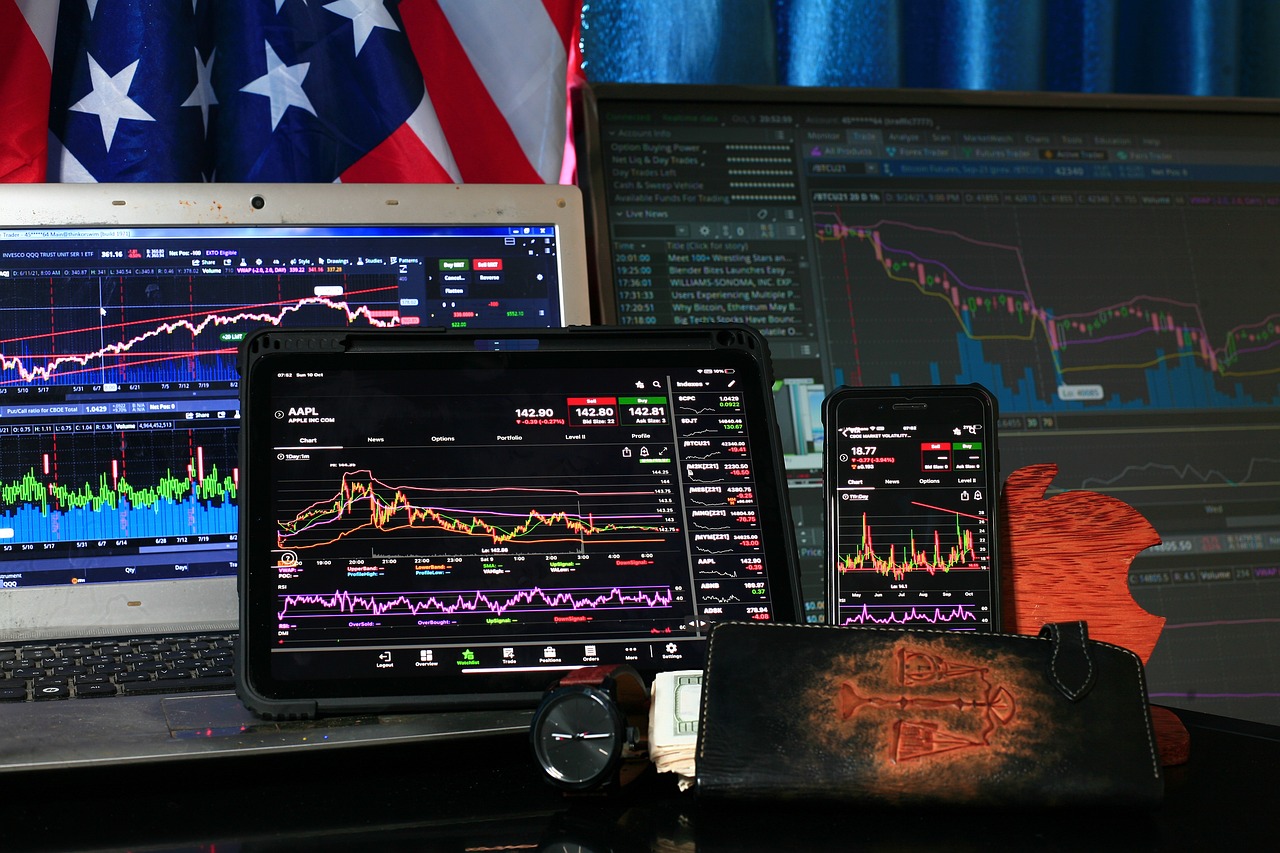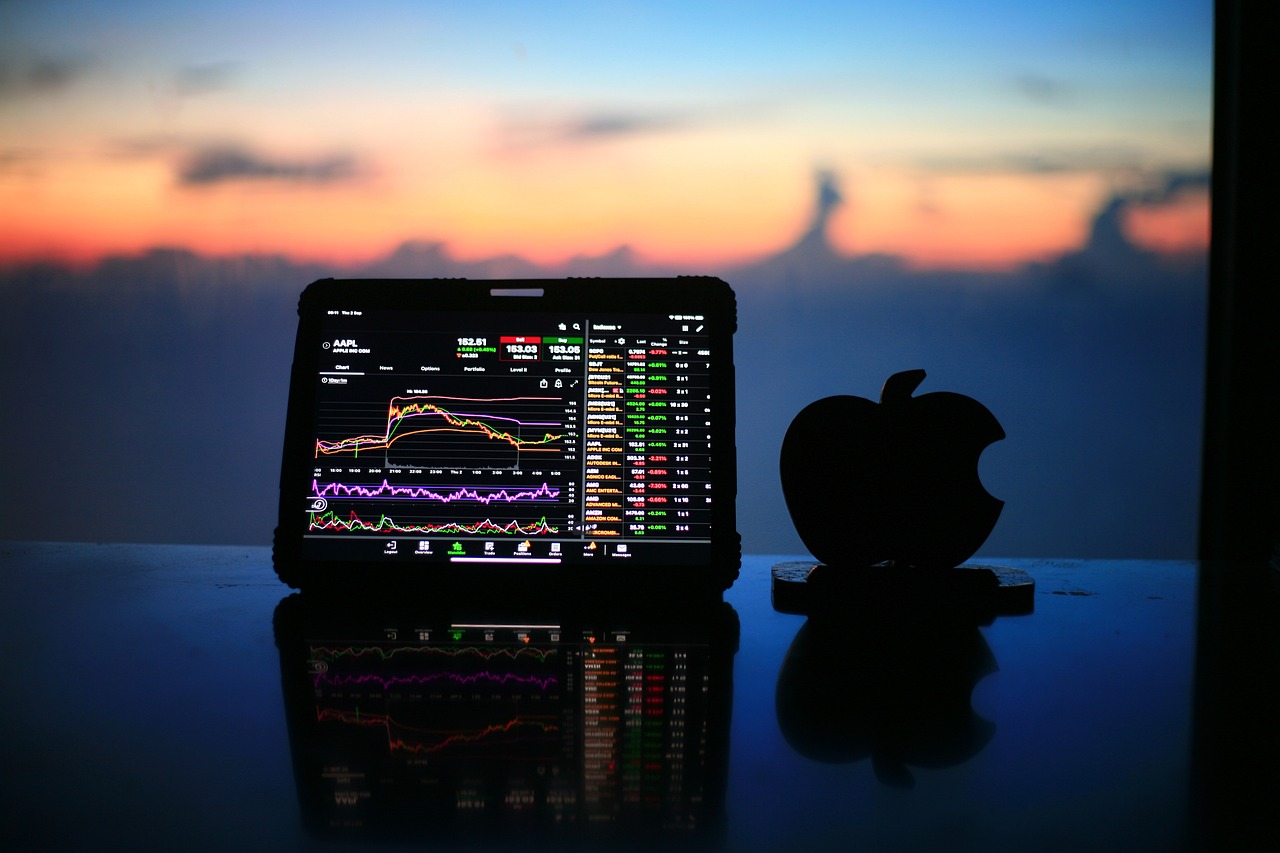How to Use the Fibonacci Sequence in Trading
In the world of trading, understanding market movements can feel like trying to solve a complex puzzle. What if I told you that there’s a mathematical principle that can help you piece together this puzzle? Enter the Fibonacci sequence, a series of numbers that not only fascinates mathematicians but also provides traders with valuable insights into market behavior. In this article, we’ll explore how to harness the power of the Fibonacci sequence to inform your trading strategies and enhance your decision-making process.
The Fibonacci sequence begins with 0 and 1, and each subsequent number is the sum of the two preceding ones, resulting in a pattern that can be observed in nature, art, and even financial markets. As traders, recognizing these patterns can give us an edge, allowing us to predict potential price movements based on historical data. Imagine having a roadmap that guides you through the often chaotic landscape of trading—this is what Fibonacci analysis offers.
But how do you actually use this sequence in trading? It’s not just about memorizing numbers; it’s about applying them effectively. We will dive into concepts like Fibonacci retracement levels, which help identify potential reversal points in the market, and Fibonacci extensions, which aid in setting price targets beyond standard retracement levels. By the end of this article, you’ll be equipped with the knowledge to incorporate Fibonacci into your trading toolkit, enhancing your ability to navigate the markets with confidence.
So, whether you’re a seasoned trader looking to refine your strategy or a newcomer eager to learn, let’s unravel the mysteries of the Fibonacci sequence together and discover how it can transform your trading experience.
The Fibonacci sequence is more than just a series of numbers; it’s a reflection of natural order and balance. Originating from the work of the Italian mathematician Leonardo of Pisa, known as Fibonacci, this sequence has captivated thinkers for centuries. The beauty of this sequence lies in its simple yet profound nature—each number is derived from the sum of the two preceding numbers. For instance, the sequence starts as follows: 0, 1, 1, 2, 3, 5, 8, 13, 21, and so forth.
In trading, the Fibonacci sequence is utilized to identify potential support and resistance levels, which are critical for making informed trading decisions. These levels are based on the key ratios derived from the Fibonacci sequence, such as 23.6%, 38.2%, 50%, 61.8%, and 100%. These ratios are not arbitrary; they reflect the psychological behavior of market participants and can indicate where price reversals may occur. By understanding these concepts, traders can position themselves advantageously in the market.
One of the most powerful tools in a trader's arsenal is the Fibonacci retracement level. These levels are essential for pinpointing potential reversal points in the market, allowing traders to make educated decisions about when to enter or exit trades. But how do you calculate these levels? It’s relatively straightforward, and once you grasp the process, you’ll find it invaluable.
To calculate Fibonacci retracement levels, follow these simple steps:
- Identify the most recent significant price movement (either a high or a low).
- Measure the distance of this movement.
- Apply the key Fibonacci ratios to this distance to determine potential retracement levels.
For example, if a stock moves from $100 to $150, the retracement levels would be calculated by taking the difference ($50) and applying the Fibonacci ratios:
| Fibonacci Ratio | Retracement Level |
|---|---|
| 23.6% | $141.80 |
| 38.2% | $138.90 |
| 50% | $125.00 |
| 61.8% | $118.20 |
These levels serve as potential support and resistance areas where price may reverse, providing traders with critical insights for their strategies.
Understanding the most commonly used Fibonacci ratios is crucial for effective analysis. Here’s a quick overview of these ratios and their significance:
- 23.6% - Indicates a shallow retracement, often seen in strong trends.
- 38.2% - A moderate retracement level that traders frequently watch.
- 50% - Although not a Fibonacci number, it is commonly used due to its psychological significance.
- 61.8% - Known as the "golden ratio," it’s one of the most critical levels for traders.
- 100% - Represents a full retracement, potentially leading to a trend reversal.
By incorporating these ratios into your trading strategy, you can enhance your ability to predict market movements and make informed decisions.
Visual representation is key in trading, and Fibonacci retracement levels can be easily plotted on trading charts. Most trading platforms offer tools to draw these levels automatically, allowing you to focus on your analysis rather than manual calculations. By analyzing price action around these levels, you can gain insights into potential market reversals and strengthen your trading strategy.
Once you’ve mastered retracement levels, it’s time to explore Fibonacci extensions. These levels help traders identify potential price targets beyond the standard retracement levels. Calculating Fibonacci extensions involves similar principles, but instead of looking for reversal points, you’re aiming to predict where the price might head next after a retracement.
To calculate Fibonacci extensions, you typically use the following steps:
- Identify the initial price movement (the swing high and low).
- Apply the Fibonacci extension ratios (typically 161.8%, 261.8%, and 423.6%) to forecast potential price targets.
By understanding both retracement and extension levels, you can create a comprehensive trading plan that encompasses both entry and exit strategies.
While Fibonacci analysis is powerful on its own, combining it with other technical indicators can significantly enhance your trading accuracy. Integrating Fibonacci levels with tools like moving averages and trend lines can provide additional confirmation for your trading decisions.
Using Fibonacci levels alongside moving averages can help confirm trends and improve entry and exit points in trades. For instance, if the price retraces to a Fibonacci level and coincides with a moving average, this could signal a strong potential reversal point.
Incorporating Fibonacci levels with trend lines adds another layer of analysis to your trading strategy. By observing where Fibonacci retracement levels intersect with trend lines, you can identify stronger support and resistance zones, giving you greater confidence in your trading decisions.
1. What is the Fibonacci sequence?
The Fibonacci sequence is a series of numbers where each number is the sum of the two preceding ones, starting from 0 and 1.
2. How do Fibonacci retracement levels work?
Fibonacci retracement levels help traders identify potential reversal points in the market by applying key Fibonacci ratios to recent price movements.
3. Can Fibonacci levels be used in any market?
Yes, Fibonacci levels can be applied across various financial markets, including stocks, forex, and cryptocurrencies.
4. Are Fibonacci levels always accurate?
While Fibonacci levels are useful tools, they are not foolproof. They should be used in conjunction with other analysis techniques for better accuracy.
5. How can I visualize Fibonacci levels on my trading chart?
Most trading platforms offer tools to automatically plot Fibonacci retracement and extension levels on charts, making it easy to visualize and analyze potential price points.

Understanding the Fibonacci Sequence
This article explores the application of the Fibonacci sequence in trading strategies, helping traders understand market movements and make informed decisions based on mathematical principles.
The Fibonacci sequence is a fascinating mathematical series that has intrigued mathematicians and traders alike for centuries. It starts with the numbers 0 and 1, and each subsequent number is the sum of the two preceding ones. So, the sequence looks like this: 0, 1, 1, 2, 3, 5, 8, 13, 21, and so on. This simple yet profound sequence can be found in various aspects of nature, art, and even financial markets. It’s almost like the universe has a hidden code, and understanding it can give traders an edge in their strategies.
But why should traders care about this sequence? Well, the Fibonacci sequence is not just a mathematical curiosity; it has practical applications in trading. The ratios derived from this sequence—such as 61.8%, 38.2%, and 23.6%—are often used to identify potential reversal points in the market. These levels can act as support or resistance, guiding traders in making decisions about when to enter or exit trades. It's like having a roadmap that can help you navigate the often tumultuous waters of trading.
The origins of the Fibonacci sequence date back to the 13th century when the Italian mathematician Leonardo of Pisa, known as Fibonacci, introduced it to the Western world. The sequence was initially used to model population growth in rabbits, but its relevance has expanded far beyond that. Today, traders utilize Fibonacci analysis to make sense of market trends and fluctuations, which can sometimes feel as chaotic as the growth of that rabbit population!
In essence, the Fibonacci sequence serves as a bridge between mathematics and trading psychology. When traders recognize these Fibonacci levels on charts, they often react in similar ways, creating a self-fulfilling prophecy. This collective behavior can amplify the effectiveness of Fibonacci levels, making them even more significant in predicting market movements. It’s almost like a secret handshake among traders who understand the power of these mathematical principles.
Ultimately, understanding the Fibonacci sequence and its implications in trading is about more than just numbers; it's about harnessing the power of mathematical relationships to make informed decisions. By integrating this knowledge into your trading strategy, you can enhance your ability to anticipate market behavior and potentially improve your trading outcomes.
Fibonacci retracement levels are crucial for identifying potential reversal points in the market. Here, we discuss how to calculate and apply these levels in trading strategies effectively.
Learn the step-by-step process of calculating Fibonacci retracement levels, including the key Fibonacci ratios used to determine potential support and resistance areas in price movements.
This section outlines the most commonly used Fibonacci ratios, such as 23.6%, 38.2%, 50%, 61.8%, and 100%, and how traders apply them to forecast market behavior.
Discover how to visually represent Fibonacci retracement levels on trading charts, enhancing your ability to identify critical price points for making trading decisions.
Fibonacci extensions help traders identify potential price targets beyond the standard retracement levels. This section explains how to calculate and utilize these extensions in trading strategies.
Integrating Fibonacci analysis with other technical indicators can enhance trading accuracy. Here, we explore effective combinations that can improve decision-making processes in trading.
This section discusses how to use Fibonacci levels in conjunction with moving averages to confirm trends and improve entry and exit points in trades.
Learn how to incorporate Fibonacci levels with trend lines to strengthen your trading strategy, providing additional confirmation for potential price reversals or continuations.
- What is the Fibonacci sequence? The Fibonacci sequence is a series of numbers where each number is the sum of the two preceding ones.
- How do Fibonacci retracement levels work? They help traders identify potential reversal points in the market based on specific Fibonacci ratios.
- Can Fibonacci be used with other indicators? Yes, combining Fibonacci with other technical indicators can enhance trading accuracy and decision-making.

Fibonacci Retracement Levels
The concept of is a cornerstone in the world of trading, acting as a powerful tool for traders seeking to identify potential reversal points in the market. These levels are derived from the Fibonacci sequence, a fascinating mathematical series that has captivated mathematicians and traders alike. Essentially, Fibonacci retracement levels are horizontal lines that indicate areas of support or resistance at the key Fibonacci levels before the price continues in the original direction. So, how do these levels work, and why should you incorporate them into your trading strategy?
To understand the significance of Fibonacci retracement levels, it's crucial to grasp the underlying mathematics. The Fibonacci sequence starts with 0 and 1, and each subsequent number is the sum of the two preceding ones, resulting in a series like 0, 1, 1, 2, 3, 5, 8, 13, and so forth. When applied to trading, specific ratios derived from this sequence, such as 23.6%, 38.2%, 50%, 61.8%, and 100%, become essential. These ratios help traders identify potential reversal points where the price might bounce back or continue its trend. Imagine standing at a crossroads; these levels act as signposts guiding you on whether to turn left or right in your trading journey.
Calculating Fibonacci retracement levels is quite straightforward, yet it requires a bit of practice. First, identify a significant price movement, either a high to low for a downtrend or low to high for an uptrend. Next, you need to draw a vertical line between these two points. The Fibonacci retracement levels are then calculated by taking the vertical distance of the price movement and applying the key Fibonacci ratios to determine the potential support and resistance levels. For instance, if the price moved from $100 to $200, the retracement levels would be calculated as follows:
| Fibonacci Level | Price Level |
|---|---|
| 23.6% | $176.40 |
| 38.2% | $161.80 |
| 50% | $150.00 |
| 61.8% | $138.20 |
As you can see from the table, these levels provide traders with a roadmap of where price corrections might occur. When the price approaches these levels, traders often look for signs of price action that indicate a potential reversal. This could be in the form of candlestick patterns, volume spikes, or other technical indicators. By combining these signals with Fibonacci retracement levels, traders can enhance their chances of making informed decisions.
Moreover, it's essential to remember that Fibonacci retracement levels are not foolproof; they are merely a guide. Market conditions can change rapidly, and external factors such as news events or economic data releases can influence price movements significantly. Therefore, it's wise to use these levels in conjunction with other technical analysis tools to form a comprehensive trading strategy.
In conclusion, mastering Fibonacci retracement levels can significantly elevate your trading game. By understanding how to calculate and apply these levels effectively, you can identify potential reversal points and make more informed trading decisions. So, are you ready to incorporate Fibonacci retracement levels into your trading strategy and watch your trading skills blossom?
- What are Fibonacci retracement levels?
Fibonacci retracement levels are horizontal lines that indicate potential support and resistance levels based on the Fibonacci sequence ratios. - How do I calculate Fibonacci retracement levels?
Identify a significant price movement, draw a vertical line between the high and low points, and apply the key Fibonacci ratios to find potential retracement levels. - Are Fibonacci retracement levels always accurate?
No, while they can provide valuable insights, they should be used alongside other technical analysis tools for best results.

Calculating Retracement Levels
Calculating Fibonacci retracement levels is like uncovering hidden treasures in the chaotic sea of market movements. To embark on this journey, you need to start with a significant price movement—this could be either a sharp rise or a sharp fall. The essence lies in identifying the peak and trough of this movement. Once you've pinpointed these two key price points, the calculation process begins. Imagine you’re a treasure hunter, and these levels are your map guiding you to potential support and resistance zones.
The first step is to measure the distance between the high and low points. Let’s say you have a stock that surged from $50 to $100. The difference here is $50. Now, to find the retracement levels, you will apply the Fibonacci ratios to this distance. The most commonly used ratios are 23.6%, 38.2%, 50%, 61.8%, and 100%. Each of these percentages represents a potential reversal point where traders might see a change in market direction.
To illustrate this, let’s break it down with a simple calculation:
| Fibonacci Ratio | Calculation | Retracement Level |
|---|---|---|
| 23.6% | 100 - (23.6% of 50) | $88.20 |
| 38.2% | 100 - (38.2% of 50) | $81.90 |
| 50% | 100 - (50% of 50) | $75.00 |
| 61.8% | 100 - (61.8% of 50) | $68.10 |
In this example, if the price retraces to $88.20, $81.90, $75.00, or $68.10, these levels could act as potential support where buyers might step in, causing the price to bounce back. Conversely, if the price breaks below these levels, it could signal a stronger downtrend. It’s important to remember that while these levels are not foolproof, they are a crucial part of the trader's toolkit. They serve as a guide rather than a guarantee, much like a compass that points you in the right direction but doesn’t assure you of reaching your destination.
Furthermore, it's advisable to combine these retracement levels with other technical indicators to enhance their effectiveness. Think of it as having a buddy on your treasure hunt—two perspectives are always better than one. For instance, if a retracement level coincides with a moving average or a trend line, it can provide a stronger signal for traders to enter or exit positions. The synergy between Fibonacci levels and other indicators can significantly improve your trading strategy, making you feel more confident as you navigate the unpredictable waters of the market.

Common Fibonacci Ratios
The Fibonacci sequence is not just a mathematical curiosity; it has profound implications in the world of trading. Among the various numbers derived from this sequence, certain ratios have become the backbone of technical analysis. These ratios help traders identify potential reversal points in the market, allowing for better-informed trading decisions. The most commonly used Fibonacci ratios include 23.6%, 38.2%, 50%, 61.8%, and 100%. Each of these ratios plays a unique role in market analysis.
To break it down further, let's take a closer look at each of these ratios:
- 23.6%: This ratio is derived from dividing a number in the Fibonacci sequence by the number that follows it. It is often considered a minor retracement level, indicating a potential reversal or continuation of the trend.
- 38.2%: This ratio is more significant and is frequently used to identify potential support and resistance levels. Traders often pay close attention to this level, as price action tends to react around it.
- 50%: Although not a Fibonacci number, this level is widely recognized in trading circles. It represents a halfway mark in price movements and can signal a strong reversal point.
- 61.8%: Known as the "Golden Ratio," this is perhaps the most crucial Fibonacci level. It is derived from dividing a number by the one two places to its right in the sequence. Many traders view this level as a key point where price may reverse or consolidate.
- 100%: This level represents the full retracement of a price move. It indicates that the price has returned to its original starting point, often leading to significant market reactions.
Understanding these ratios is essential for traders looking to enhance their strategies. By incorporating these Fibonacci levels into your trading analysis, you can better anticipate market movements and make more informed decisions. For instance, if a stock retraces to the 61.8% level and shows signs of support, it may be a good entry point for a buy order. Conversely, if the price hits the 38.2% level and starts to decline, it could signal a potential exit point.
In summary, the common Fibonacci ratios serve as critical tools for traders. They provide insight into potential price points where reversals may occur, thereby allowing traders to position themselves advantageously in the market. By mastering these ratios, you can elevate your trading game and navigate the complex world of financial markets with greater confidence.
1. What is the significance of the Fibonacci ratios in trading?
The Fibonacci ratios help traders identify potential reversal points in the market, allowing for better decision-making based on mathematical principles.
2. How do I calculate Fibonacci retracement levels?
To calculate Fibonacci retracement levels, identify the high and low points of a price movement, then apply the Fibonacci ratios to find potential support and resistance levels.
3. Can Fibonacci levels be used in all markets?
Yes, Fibonacci levels can be applied across various markets, including stocks, forex, and commodities, making them versatile tools for traders.
4. Are there any limitations to using Fibonacci analysis?
While Fibonacci analysis can be powerful, it is not foolproof. Market conditions can change rapidly, and it's essential to use Fibonacci levels in conjunction with other technical indicators for better accuracy.

Using Retracement Levels in Charts
When it comes to trading, visual representation is everything. Imagine you're a pilot navigating through the clouds; without a clear view of the landscape below, you could easily lose your way. Similarly, using Fibonacci retracement levels on your trading charts can help you pinpoint critical price points, allowing you to make informed decisions while minimizing risk. By plotting these levels on your charts, you can visually identify areas where the price may reverse, consolidate, or continue its trend.
To effectively use Fibonacci retracement levels in your charts, start by determining the most recent significant price movement—this could be a major peak or trough. Once you have identified this range, you can apply the Fibonacci levels by drawing horizontal lines at the key retracement percentages: 23.6%, 38.2%, 50%, 61.8%, and 100%. Each of these levels serves as a potential support or resistance area, acting like a safety net for your trades.
For example, if a stock has recently surged from $50 to $100, you would draw your Fibonacci retracement from the low of $50 to the high of $100. The resulting levels would be calculated as follows:
| Retracement Level | Price Level |
|---|---|
| 0% | $100 |
| 23.6% | $88.2 |
| 38.2% | $81.8 |
| 50% | $75 |
| 61.8% | $68.2 |
| 100% | $50 |
As the price approaches these levels, traders often watch closely for signs of reversal, such as candlestick patterns or increased volume. It's essential to remember that no indicator is foolproof; thus, combining Fibonacci levels with other technical analysis tools can enhance your confidence in your trading decisions. For instance, if the price hits the 61.8% retracement level and you also notice a bullish engulfing pattern forming, that's a strong signal to consider entering a long position.
Moreover, don't forget to adjust your Fibonacci levels when significant price movements occur. The market is dynamic, and what worked yesterday might not hold today. Regularly updating your charts ensures that you stay in tune with the latest market trends and can react swiftly to changes. In essence, using Fibonacci retracement levels in your charts is like having a roadmap—one that guides you through the unpredictable terrain of trading.
- What are Fibonacci retracement levels? They are horizontal lines that indicate potential support or resistance levels based on the Fibonacci sequence.
- How do I draw Fibonacci retracement levels? Identify a significant price movement, then draw horizontal lines at the key Fibonacci percentages between the high and low points.
- Can Fibonacci levels be used in all markets? Yes, Fibonacci retracement levels can be applied in various markets, including stocks, forex, and commodities.
- Are Fibonacci levels guaranteed to work? No, they are not foolproof. It's crucial to use them in conjunction with other indicators for better accuracy.

Fibonacci Extensions
The concept of is an essential tool for traders who are looking to identify potential price targets that go beyond the standard retracement levels. While Fibonacci retracement levels help to pinpoint where a price might reverse, extensions allow traders to project how far a price may move in the direction of the trend after a pullback. This is akin to having a roadmap that not only shows you where you’ve been but also where you might be headed next.
To understand Fibonacci extensions, we first need to recognize that they are derived from the same Fibonacci ratios that we use in retracement levels. The most commonly used Fibonacci extension levels are 161.8%, 261.8%, and 423.6%. These levels can serve as potential targets for traders looking to maximize their profits during a trend. For example, if a stock is currently in an uptrend and retraces to a support level, the trader can use Fibonacci extensions to set profit targets beyond the current price point.
Calculating Fibonacci extensions is straightforward and can be done using a simple formula. To calculate the extension levels, follow these steps:
- Identify the significant price swing high and swing low points.
- Measure the distance between these two points.
- Multiply this distance by the Fibonacci ratios (e.g., 161.8%, 261.8%, 423.6%).
- Add the result to the swing low (for upward trends) to find the extension level.
For example, if a stock’s swing low is at $50 and the swing high is at $70, the distance is $20. If we multiply this by 161.8%, we get $32.36. Adding this to the swing low gives us a potential extension level of $82.36. Traders can use this level to set their profit targets, thereby improving their chances of capitalizing on upward momentum.
When plotting Fibonacci extensions on a chart, it’s crucial to visually represent these levels to enhance your trading strategy. Many trading platforms offer tools that allow you to easily draw Fibonacci extension lines on your charts. This visual representation can help you quickly identify potential price targets and make informed decisions about when to enter or exit a trade.
Incorporating Fibonacci extensions into your trading strategy can significantly enhance your ability to forecast market behavior. However, it's important to remember that while Fibonacci extensions are powerful tools, they should be used in conjunction with other technical analysis methods for best results. For instance, combining Fibonacci extensions with support and resistance levels, trend lines, or other indicators can provide additional confirmation for your trading decisions.
In conclusion, Fibonacci extensions are not just numbers; they are a way to anticipate future price movements based on past behavior. By understanding how to calculate and apply these extensions, traders can create a more robust trading strategy that not only identifies potential reversal points but also sets realistic profit targets. So, the next time you’re analyzing a chart, don’t forget to look beyond the retracement levels—explore the extensions and see where the market might take you!
- What are Fibonacci extensions used for? Fibonacci extensions are used to identify potential price targets beyond the standard retracement levels, helping traders maximize profits during trending markets.
- How do I calculate Fibonacci extensions? To calculate Fibonacci extensions, identify the swing high and low, measure the distance between them, and multiply by the Fibonacci ratios like 161.8%, 261.8%, and 423.6%.
- Can Fibonacci extensions be used in all markets? Yes, Fibonacci extensions can be applied in various markets including stocks, forex, and cryptocurrencies, making them versatile tools for traders.
- Should I use Fibonacci extensions alone? While Fibonacci extensions are helpful, it's advisable to combine them with other technical indicators for more accurate trading decisions.

Combining Fibonacci with Other Indicators
The world of trading is like a vast ocean, filled with waves of data and patterns that can either drown you or carry you to success. One of the most powerful tools in this ocean is the Fibonacci sequence. But what happens when you combine this mathematical marvel with other trading indicators? Well, it’s like adding a turbocharger to an already fast car—it enhances your performance and gives you an edge in the market.
Integrating Fibonacci analysis with other technical indicators can significantly improve your trading accuracy. Think of it as assembling a team of superheroes, each with unique powers, working together to save the day. When you combine Fibonacci levels with indicators like moving averages, trend lines, and oscillators, you create a more robust trading strategy that can help you navigate the unpredictable waters of the market.
For example, when you use Fibonacci retracement levels alongside moving averages, you can confirm trends more effectively. Imagine you see a stock retracing to the 61.8% Fibonacci level while also bouncing off a 50-day moving average. This confluence of signals can provide a strong indication that the price will reverse, offering a prime entry point for your trade. It’s like getting a double confirmation from two different sources—who wouldn’t feel more confident in that scenario?
Another powerful combination is using Fibonacci levels with trend lines. Trend lines help you visualize the direction of the market, while Fibonacci levels provide specific price points that may act as support or resistance. When these two elements align, it’s like finding the sweet spot on a bullseye. For instance, if a trend line intersects with a Fibonacci retracement level, traders often see this as a strong signal for a potential reversal or continuation of the trend.
Moreover, the synergy between Fibonacci and momentum indicators, such as the Relative Strength Index (RSI) or the Moving Average Convergence Divergence (MACD), can also enhance your trading strategy. When the RSI indicates that a stock is oversold at a Fibonacci support level, it’s like a neon sign flashing “buy me!” Similarly, if the MACD shows bullish divergence while the price is near a Fibonacci level, it could be a powerful signal to enter a position. The key is to look for these confluences, as they can provide a clearer picture of market dynamics.
Ultimately, combining Fibonacci with other indicators is about creating a multi-faceted approach to trading. It’s not just about relying on one tool; it’s about building a comprehensive strategy that takes into account various factors influencing the market. By doing so, you’re not just throwing darts in the dark; you’re making informed decisions based on a well-rounded analysis.
- What are Fibonacci retracement levels?
Fibonacci retracement levels are horizontal lines that indicate potential support or resistance levels based on the Fibonacci sequence. Traders use these levels to identify possible reversal points in the market. - How do I calculate Fibonacci retracement levels?
To calculate Fibonacci retracement levels, identify the high and low points of a price movement, then apply the key Fibonacci ratios (23.6%, 38.2%, 50%, 61.8%, and 100%) to find potential support and resistance levels. - Can I use Fibonacci with any trading strategy?
Yes, Fibonacci levels can be integrated into various trading strategies, whether you’re day trading, swing trading, or investing long-term. The key is to combine them with other indicators for better accuracy. - What is the best way to combine Fibonacci with other indicators?
The best way is to look for confluences where Fibonacci levels align with other indicators, such as moving averages or trend lines. This can provide stronger signals for entry and exit points.

Fibonacci and Moving Averages
When it comes to trading, the fusion of Fibonacci levels and moving averages can create a powerful synergy that enhances your trading strategy. Think of Fibonacci retracement levels as the road signs guiding you through the unpredictable terrain of the market, while moving averages act as your vehicle, smoothing out the bumps along the way. By combining these two tools, traders can gain a clearer picture of potential entry and exit points, making their decisions more informed and strategic.
So, how do you effectively use Fibonacci levels alongside moving averages? First, it’s essential to understand that moving averages help to identify the overall trend of a stock or asset. They do this by averaging past price data, which can help filter out market noise. When you overlay Fibonacci levels on a chart that also includes moving averages, you can pinpoint areas where the price is likely to react. For example, if the price approaches a key Fibonacci retracement level and also aligns with a moving average, it could indicate a strong support or resistance zone.
Let's break it down with an example: Imagine you're analyzing a stock that has recently experienced a significant upward movement. You plot the Fibonacci retracement levels from the low to the high of that movement. Now, if you also apply a 50-day moving average to your chart, you might find that the price retraces to the 61.8% Fibonacci level and coincides with the moving average. This convergence could signal a potential buying opportunity, as it suggests that both the Fibonacci level and the moving average are reinforcing each other’s significance.
Moreover, it’s crucial to pay attention to the crossovers that can occur between moving averages. For instance, a bullish crossover happens when a shorter moving average crosses above a longer moving average, which can be a strong confirmation signal, especially if it occurs near a Fibonacci level. Conversely, a bearish crossover can indicate a potential sell signal, particularly if it aligns with a Fibonacci resistance level.
To visualize this, consider the following table that outlines how different moving averages can interact with Fibonacci levels:
| Moving Average Type | Fibonacci Level | Trading Signal |
|---|---|---|
| 50-Day Moving Average | 61.8% | Potential Support |
| 200-Day Moving Average | 38.2% | Potential Resistance |
| 20-Day Moving Average | 23.6% | Short-term Trend Confirmation |
In conclusion, the integration of Fibonacci levels with moving averages not only enhances your trading strategy but also provides a comprehensive framework for understanding market dynamics. By observing how these tools interact, traders can develop a more nuanced approach to their trades, ultimately increasing their chances of success. Remember, trading is not just about making quick decisions; it's about making informed ones, and the combination of Fibonacci and moving averages can help you achieve that.
- What are Fibonacci retracement levels? Fibonacci retracement levels are horizontal lines that indicate potential support and resistance levels based on the Fibonacci sequence.
- How do moving averages work? Moving averages smooth out price data to help traders identify trends by averaging prices over a specific period.
- Can I use Fibonacci levels with any type of moving average? Yes, Fibonacci levels can be used with any type of moving average, whether it’s simple, exponential, or weighted.
- What is the best moving average to use with Fibonacci levels? It depends on your trading strategy, but commonly used moving averages include the 20-day, 50-day, and 200-day.

Fibonacci with Trend Lines
Integrating Fibonacci levels with trend lines is like adding the perfect seasoning to a delicious dish; it enhances the overall flavor of your trading strategy. By combining these two powerful tools, traders can gain a clearer picture of potential price movements and reversals. Trend lines help visualize the direction of the market, while Fibonacci levels provide specific price points where reversals might occur. This synergy can be a game-changer for those looking to make informed trading decisions.
To effectively use Fibonacci with trend lines, start by identifying the significant peaks and troughs in a price chart. Draw your trend lines connecting these points, creating a framework for the market's movement. Once you have established your trend lines, overlay the Fibonacci retracement levels. This can be done by selecting the Fibonacci retracement tool on your trading platform and applying it between the identified high and low points of your trend. What you’ll find is that many of the Fibonacci levels align perfectly with your trend lines, creating a confluence of support and resistance.
Imagine you’re on a treasure hunt. Your trend lines are like the map, guiding you towards potential treasure spots, while the Fibonacci levels are the X that marks the spot. When these two elements align, it’s a signal that you might be onto something significant. For instance, if a Fibonacci retracement level of 61.8% coincides with a trend line support, this could indicate a strong buying opportunity. Conversely, if the price approaches a trend line resistance and also hits a 38.2% Fibonacci level, it could be a signal to consider selling or tightening your stop-loss.
Moreover, the beauty of using Fibonacci with trend lines lies in its ability to provide additional confirmation for your trades. When both indicators suggest a reversal point, it strengthens the case for entering or exiting a position. This dual confirmation can help reduce the risk of false signals, which is particularly important in the volatile world of trading. For example, if the price bounces off a trend line and simultaneously respects a Fibonacci level, it can give traders the confidence to act.
Incorporating Fibonacci levels with trend lines is not just about identifying potential reversals; it also helps in setting realistic price targets. By extending your trend lines and applying Fibonacci extensions, you can project where the price might head next after a reversal. This approach transforms your trading strategy into a more robust plan, allowing for better risk management and profit-taking opportunities.
In conclusion, the combination of Fibonacci levels and trend lines creates a powerful trading strategy that can enhance your decision-making process. By recognizing the synergy between these two tools, traders can better navigate the complexities of the market and improve their chances of success. So next time you're analyzing a chart, remember to draw those trend lines and apply your Fibonacci levels. You might just uncover the next big trading opportunity!
- What are Fibonacci levels and how are they used in trading?
Fibonacci levels are horizontal lines that indicate potential support and resistance levels based on the Fibonacci sequence. Traders use these levels to predict possible price reversals and to make informed trading decisions. - How do I calculate Fibonacci retracement levels?
To calculate Fibonacci retracement levels, identify the high and low points of a price movement. The key Fibonacci ratios (23.6%, 38.2%, 50%, 61.8%, and 100%) are then applied to the vertical distance between these points. - Can I use Fibonacci levels without trend lines?
Yes, Fibonacci levels can be used independently, but combining them with trend lines provides additional confirmation and enhances the accuracy of your trading strategy. - What is the significance of the 61.8% Fibonacci level?
The 61.8% level is often considered a critical point for potential reversals, making it one of the most watched Fibonacci levels by traders.
Frequently Asked Questions
- What is the Fibonacci sequence and why is it important in trading?
The Fibonacci sequence is a series of numbers where each number is the sum of the two preceding ones, starting from 0 and 1. In trading, it helps traders identify potential reversal points and support and resistance levels, making it a valuable tool for predicting market movements.
- How do I calculate Fibonacci retracement levels?
To calculate Fibonacci retracement levels, first identify the high and low points of a price movement. Then, subtract the low from the high to find the range. Multiply this range by the key Fibonacci ratios (23.6%, 38.2%, 50%, 61.8%) and subtract these values from the high to find potential support levels.
- What are the common Fibonacci ratios used in trading?
The most commonly used Fibonacci ratios are 23.6%, 38.2%, 50%, 61.8%, and 100%. These ratios help traders predict potential reversal points in the market by indicating areas where price may find support or resistance.
- How can I visually represent Fibonacci retracement levels on a trading chart?
To represent Fibonacci retracement levels on a chart, use your trading platform's Fibonacci tool. Select the tool, click on the high point, and drag it to the low point. The tool will automatically plot the key Fibonacci levels on your chart, helping you identify critical price points.
- What are Fibonacci extensions and how do they differ from retracement levels?
Fibonacci extensions are used to identify potential price targets beyond the standard retracement levels. While retracement levels focus on potential reversal points within a trend, extensions help traders forecast where the price might go after a retracement, providing additional insights for setting profit targets.
- Can I combine Fibonacci analysis with other technical indicators?
Absolutely! Combining Fibonacci analysis with other indicators, like moving averages and trend lines, can enhance your trading accuracy. For example, using Fibonacci levels alongside moving averages can confirm trends and improve your entry and exit points.
- How do I use Fibonacci levels with moving averages?
To use Fibonacci levels with moving averages, look for points where the moving average intersects with the Fibonacci retracement levels. This can signal a strong potential reversal or continuation of a trend, giving you a clearer picture of when to enter or exit a trade.
- What role do trend lines play when using Fibonacci levels?
Trend lines can provide additional confirmation when using Fibonacci levels. By drawing trend lines and observing their intersection with Fibonacci levels, traders can strengthen their strategies and make more informed decisions about potential price reversals or continuations.



















